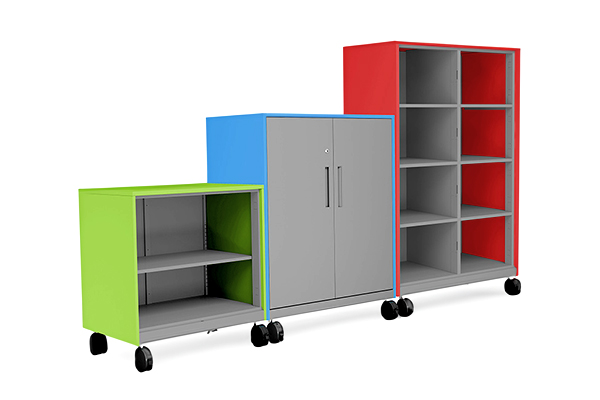An art classroom is a sanctuary of self-expression, where young minds venture into the realm of imagination and creativity. Beyond its aesthetic appeal, the art classroom serves as a dynamic learning space where students develop invaluable skills like problem-solving, critical thinking, and collaboration. Crafting an art classroom that truly inspires creativity requires thoughtful planning and design. Let's explore some guiding principles to create an environment where artistic brilliance thrives.
Embrace Flexibility and Adaptability
Art rooms encompass various forms, from painting and drawing to sculpting and mixed media. To accommodate this diversity, flexibility and adaptability are crucial. Opt for art classroom furniture that allows easy rearrangement, enabling students to move around freely and work in diverse ways. Adjustable tables and chairs cater to different art projects and student heights, fostering a comfortable and conducive environment for creativity to flourish.
Curate a Rich Palette of Art Supplies
A well-stocked arsenal of art supplies is the heart of any art classroom. Paints, pastels, markers, clay, fabric, and recyclables compose a vibrant selection of materials that encourage students to explore and experiment. A diverse range of art supplies nurtures curiosity and empowers young artists to express their visions through different mediums.
Create an Inviting and Inspiring Space
As students step into the art classroom, it should be a haven of inspiration and creative wonder. Natural lighting plays a vital role in cultivating the ambiance, infusing the space with warmth and vitality. Add splashes of color with captivating artwork adorning the walls, alongside motivational quotes that spark creativity. Plants and decorative elements create a harmonious atmosphere, inviting students to dive into the depths of their imagination.
Utilize Innovative School Furniture Solutions
Innovative furniture solutions optimize the art classroom's functionality, enhancing both organization and creativity. Consider storage units that double as work surfaces, ensuring efficient use of space while keeping art supplies within easy reach. Art carts or mobile storage solutions allow students to access materials effortlessly, promoting a seamless flow of creativity.
Encourage Student Ownership
Empowerment lies at the heart of creativity. Involve students in the design process, encouraging them to contribute ideas for the classroom layout, organization, and decor. By fostering a sense of ownership, students develop pride in their creative space and feel a deeper connection to their artistic journey.
Promote Openness and Collaboration
Art is not a solitary endeavor; it thrives in an environment of openness and collaboration. Design communal workstations that facilitate group projects, idea exchange, and peer support. Open spaces within the art classroom can also serve as platforms for art exhibitions, celebrating students' creative achievements and nurturing a sense of community.
Integrate Technology Thoughtfully
While traditional art supplies remain essential, technology offers exciting opportunities for artistic exploration. Thoughtfully integrate digital art tools and software to broaden students' horizons and expose them to innovative forms of creativity. The integration of technology fosters a dynamic and contemporary approach to artistic expression.
Designing an art classroom that sparks creativity is an art in itself. By considering the unique needs of young artists and fostering an environment that ignites imagination, educators can create a space where students flourish as creators and thinkers. A well-designed art classroom serves as a springboard for artistic brilliance, nurturing a lifelong love for the arts and empowering students to embrace the boundless possibilities of creativity.




